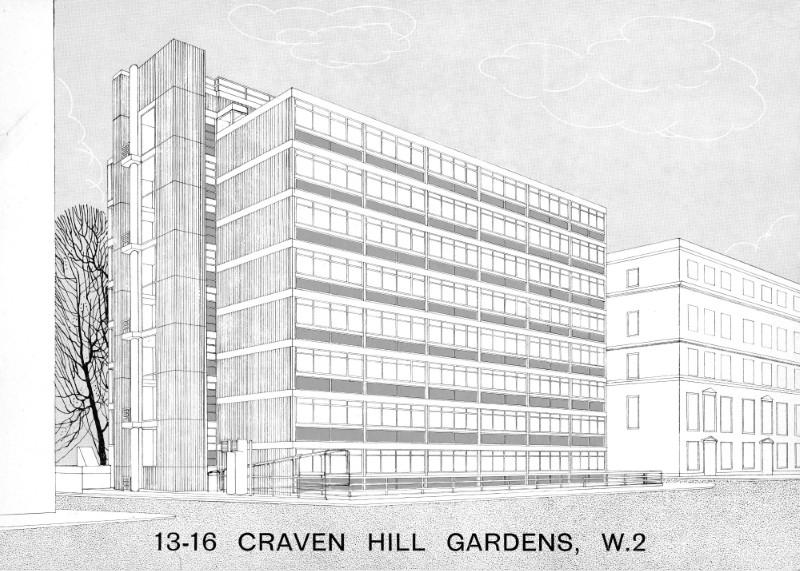Edward Erdman and Co. in Mayfair were the sole agents to
market the new apartments on behalf of Hector Properties
Investments and the freeholder, Ms Wimbush. Erdman
advertised in The Times and produced an impressive
information pack for prospective tenants. The "skilful
design" of the block was mentioned, as was its
"advantageous location" with "excellent shopping
facilities immediately to hand". Erdman's brochure referred
to the balconies overlooking Corringham's private gardens
and boasted that the "kitchens are well equipped with
stainless steel double sinks and mixer taps, ample working
surfaces, and to obviate condensation a specially designed
fan-operated extractor hood". Garage spaces were available
"by arrangement" and the building even featured "central
heating, constant hot water, an automatic lift, and porterage".
Soon all flats were let, many to companies that rented several
for their employees.
A few more modern buildings were constructed in the area
in the late 1960s. The Royal Lancaster Hotel, built in
1967, is the tallest tower in the area and stands where
Bayard's Watering Place once was. Hyde Park Towers,
diagonally opposite 13-16 Craven Hill Gardens, was
built in the 1970s. Lancaster Gate's Christ Church was
converted into luxury flats in 1981. By that time,
the conservationist movement was gaining support; 100
Leinster Terrace, where J.M. Barrie wrote Peter Pan,
was saved.




